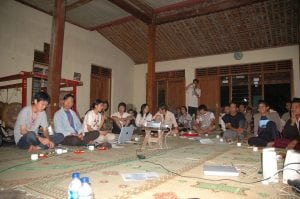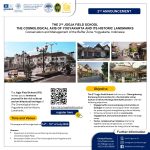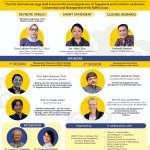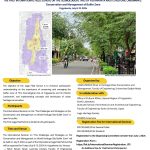BFS 2006
The BFS 2006 assignment was to formulate village design guidelines
The frst step was to undertake an analysis and evaluation at Klipoh:
- physical problems:
– ground exploitation for raw materials for pottery
– flood plain: erosion, polluted water, and silting up of river/sedimentation
– ‘new design’ of buildings
– pottery and construction material stock arrangement
– building arrangement related to limited land resources
- economic problems:
– limited skilled human resources
– limited design/creativity
– limited fnancial capital
– cheap sale price
– distribution network
- social problems:
– lack of knowledge and skills
– industrial pottery management
– limited human resources
– no regeneration
– gaps between young and old generations (especially on product design capacity).
Recommendations were then made for various aspects
- marketing – fnd buyers who have the capacity to provide training in new designs and
technology and to buy and market the product
- environmental – think about the environmental sustainability of pottery
- tourism – tourism is a side effect of being a pottery village, so conserve the uniqueness
of the village
- physical – local guidelines from and for the community; new houses must be well
designed (give more attention to human scale and traditional form)
- management – revitalize local organizations
- linkage – create links to other villages in the Borobudur area (glass noodle village, tofu
village, etc.) for cultural landscape unity
- design – conserve old designs and reinvent new designs.
Participants of 3rd BFS, 2006
Name
Laretna T. Adishakti (P)
Dwita Hadi Rahmi (P)
Titi Handayani (P)
Amiluhur Soeroso (L)
Tomoko Miyagawa (P)
Sinta Carolina (P)
Kusumaningdyah NH (P)
Satrio Utomo D (L)
Ngurah (L)
Iwan Imam Sujai (L)
Nicolas Zaegel (L)
Granita Ika (P)
Winarni (P)
Abrilianty Octaria (P)
Siswanto (L)
Maria Carmelia (Lieke) (P)
Tomoki Motozuka (L)
Seika Oishi (P)
Mayu Kanatani (P)
Takayuki Kawane (L)
Yvonne Tarore
Arif Budi Sholihah
Retno Ayu




